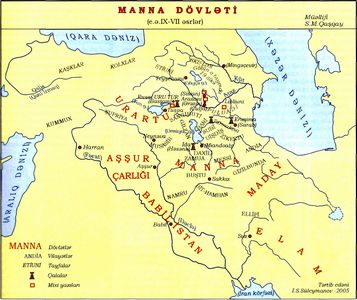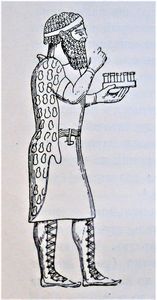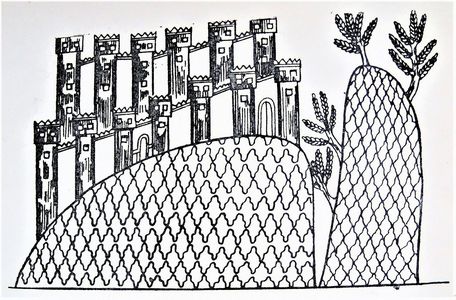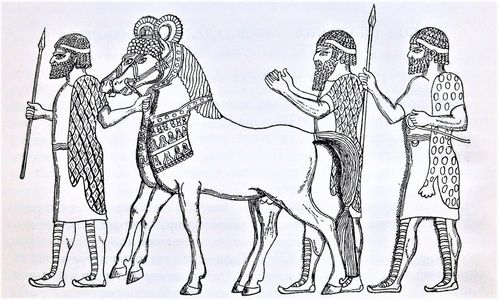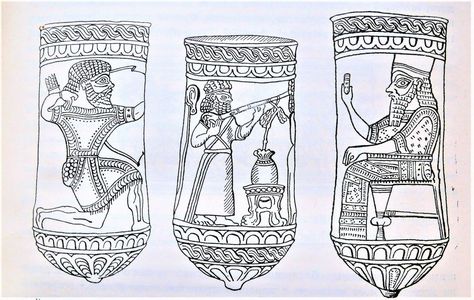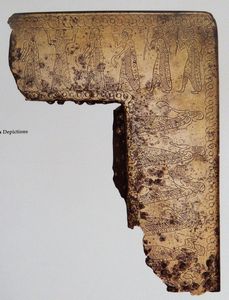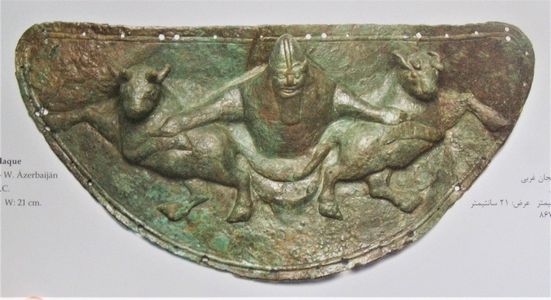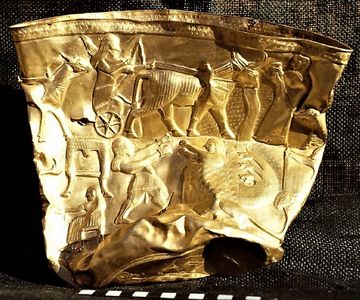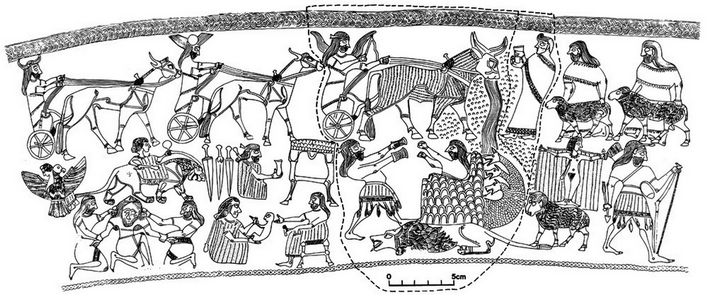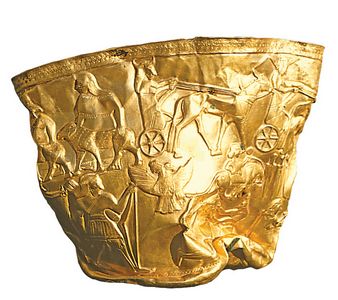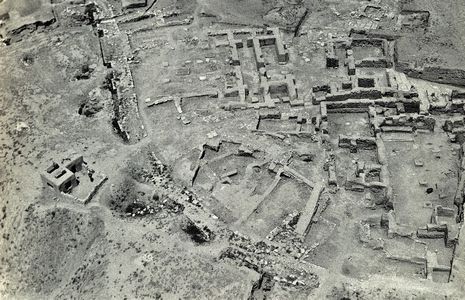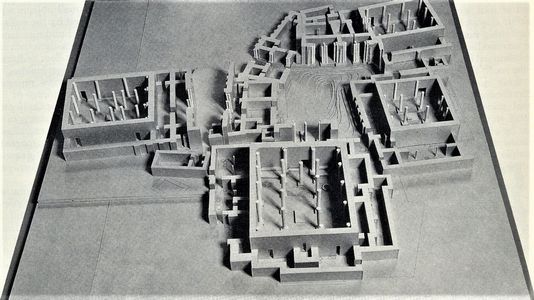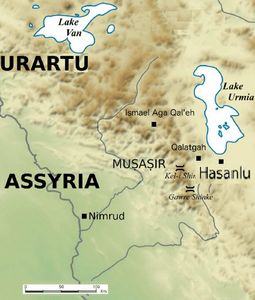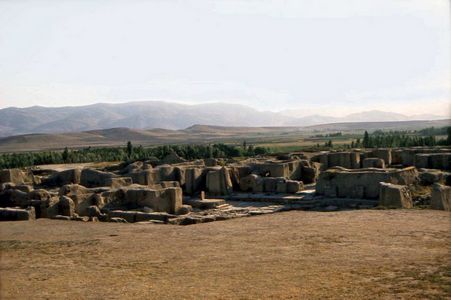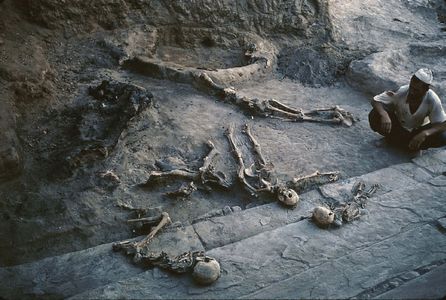THE STATE OF MANNA (IX-VI centuries B.C.)
The first state created in the territory of Azerbaijan is the Manna state. The name of manna first appeared in B.C. It is mentioned in the Assyrian cuneiform inscription in 843 as "Munna". In the Urartu inscriptions, the name of this state is given as Mana, and in the Torah as Minni. The state was formed in the territory of Ich Zamua province, south of Lake Urmia. B.C. In 829, Udaki, the ruler of Manna, and the capital city of Zirta (later Izirtu) were named. B.C. In the 30s and 20s of the ninth century, all the political institutions in the south and southeast of Lake Urmia - the "countries" - were united under the rule of most of Udaki. As a result, the geographical boundaries of Manna were greatly expanded.
B.C. In the late IX and early VIII centuries, the state of Manna was repeatedly plundered by powerful powers such as neighboring Assyria and Urartu. In these ruthless wars, Manna was able to maintain its statehood at the cost of sacrificing large populations and natural resources. Whenever possible, Manna marched on hostile nations.
The reign of the ruler of Manna, Iranzu (740 - 719 B.C.) is considered to be the heyday of Manna. At that time, almost all the lands of South Azerbaijan were part of the Manna state, and the northern borders of the state reached the Araz River.
The name of the Manna was met in the Bible in 593 Here Manna, together with the Scythians (Scythians) and Urartu, was called to fight against Babylon.
State structure of Manna
The capital of the state of Manna was Izirtu. The ruler's residence, the main government offices, and the treasury were in this city. In VIII-VII centuries B.C., the ruling dynasty of Manna was inherited. In Manna, the council of elders under the ruler was an advisory body. The territory of the state consisted of provinces; the provinces were governed by deputies appointed by the ruler. Nobles, advisers and members of the ruling dynasty took part in governing the state. Manna had armies of chariots and infantry. Numerous fortresses have been built in the country.
Manna's economic life
Favorable natural-geographical position created conditions for the development of agriculture and cattle breeding in Manna. Along with cotton cultivation, artificial irrigation was widespread here. Several varieties of barley, wheat, and millet were grown in the manna. Iron tools, sickles, and bronze cutters were used in agriculture. Assyrian writings provide a wealth of information about grain (wheat and barley), flour, oil, and wine.
As Manna is a mountainous country, there were all conditions for the development of cattle breeding. Mikhi inscriptions provide information on the keeping of large and small cattle and the feeding of horses in the lands of Manna. According to the descriptions on the vessels found in Hasanly, Manna had chariots with one or two horses.
Manna was rich in minerals. The deposits of copper, iron, gold, and lead created favorable conditions for the development of mining and handicrafts in Manna.
Manna had workshops in various fields of art (blacksmithing, coppersmithing, jewelry and weapons production). Gold and silver utensils and jewelry (gold belts, earrings, necklaces, bracelets, etc.) found in Hasanli, Ziviye and Marligtepe show a very high level of artistic metallization. Manna also had a high level of architecture, stonework and masonry. The art of weaving and dyeing was also developed.
Religious ideas
Idolatry and polytheism were rampant in Manna. In the cities there were temples with statues of the gods. The golden glass found at the Hasanli monument depicts the worship and sacrificial ceremony of the Manna people. The golden glass depicts the Storm or War, Sun and Moon gods worshiped by the Mannaeans. The worship of the Tree of Life was widespread in Manna.
Azerbaijan in the VI-V centuries B.C.
In 590 B.C., the lands of Manna were occupied by the Medes, and the state of Manna collapsed. The territory of Manna became part of Media. The northern lands of Azerbaijan were beyond the borders of Media. The powerful Medes put an end to the existence of powerful empires such as Assyria and Urartu and became one of the most powerful nations in the East. The population of Azerbaijan also played an important role in strengthening Media. The Medes when it collapsed in 550, its territory, including the former lands of Manna, was incorporated into the Achaemenid state, which was established on the site of Media. The Achaemenid ruler Cyrus II set out to conquer the northern lands of Azerbaijan in B.C.. In 530 he marched on the Massagetes north of Araz. The Greek author Herodotus called the Massagets a numerous and brave people living north of the Araz River. Cyrus II's attempt to seize the Azerbaijani lands north of Araz failed. The Massagets, led by the female ruler Tomris, routed the Achaemenids and killed Cyrus II.
During the reign of Darius I (522 B.C. - 486 B.C.), the Achaemenid marches from the Araz to the lands of Azerbaijan north were met with strong resistance from the Sak tribes here. According to ancient Greek authors, the Sak and Albanian tribes living north of Araz fought in the battles against their enemies, including Alexander the Great, as allies of the Achaemenids.
THE CONTRIBUTION OF THE STATE OF MANNA TO WORLD CULTURE
Ancient cuneiform inscriptions and murals show the high cultural development of the Manna state. Archaeological excavations carried out by US and European archeological expeditions in the Azerbaijani parts of the territory of the present-day Islamic Republic of Iran in the 1950s proved that the contribution of the Mannaeans to human civilization was enormous. Most of the material and cultural samples found in the residence of the ruler in Hasanly fortress, as well as in the monuments of Ziviya and Marlig are displayed in world museums. Among the most famous finds are the golden glass found in the Hasanly monument (known as the "death glass") and the pectoral (chest ornament) found in Ziviya. The golden glass found in Hasanly depicts the worship and sacrificial ceremony of the Manna people. Three chariots of mules and oxen were driven by winged gods with long hair reaching to the middle of their backs and wearing fringed clothes. Two priests approaching the gods perform the worship ceremony,, and two servants bring a sacrificial lamb. The golden glass depicts the Storm or War, Sun and Moon gods worshiped by the Mannaeans. Hasanly also found the skeletons of a young boy and girl found in the same grave, known as the "death kiss."
The ruler's palace in Hasani fortress
Hasani Fortress is located in the West Azerbaijan Province of Iran, southwest of Lake Urmia, in the valley of the Sulduz River. Life in the castle existed from the VI millennium until the III century B.C. Archaeological expeditions led by British archaeologist Mark Stein in 1935-1936 and American archaeologist Robert Dyson in 1956-1977 identified 10 archeological sites. Castle walls, one- and two-storey houses, workshops, warehouses, religious buildings, as well as the royal palace were found here. The fortress is 8 m above the surrounding plain, and the citadel is 25 m high. The most unique finds in the castle date back to the Manna period, belonged to the IX-VIII centuries B.C. The royal palace was destroyed by the Urartu army, the defenders fought to the last drop of blood, the palace was completely destroyed by fire and never rebuilt. Archaeologists have found materials with the traces of fire, and skeletons of fallen soldiers under the rubble. The discovered materials are currently displayed in museums in the United States, Great Britain and Iran. The exhibits prove that Manna had a royal residence and palace, and that architecture and other arts, including artistic metalworking, were highly developed in the state.
